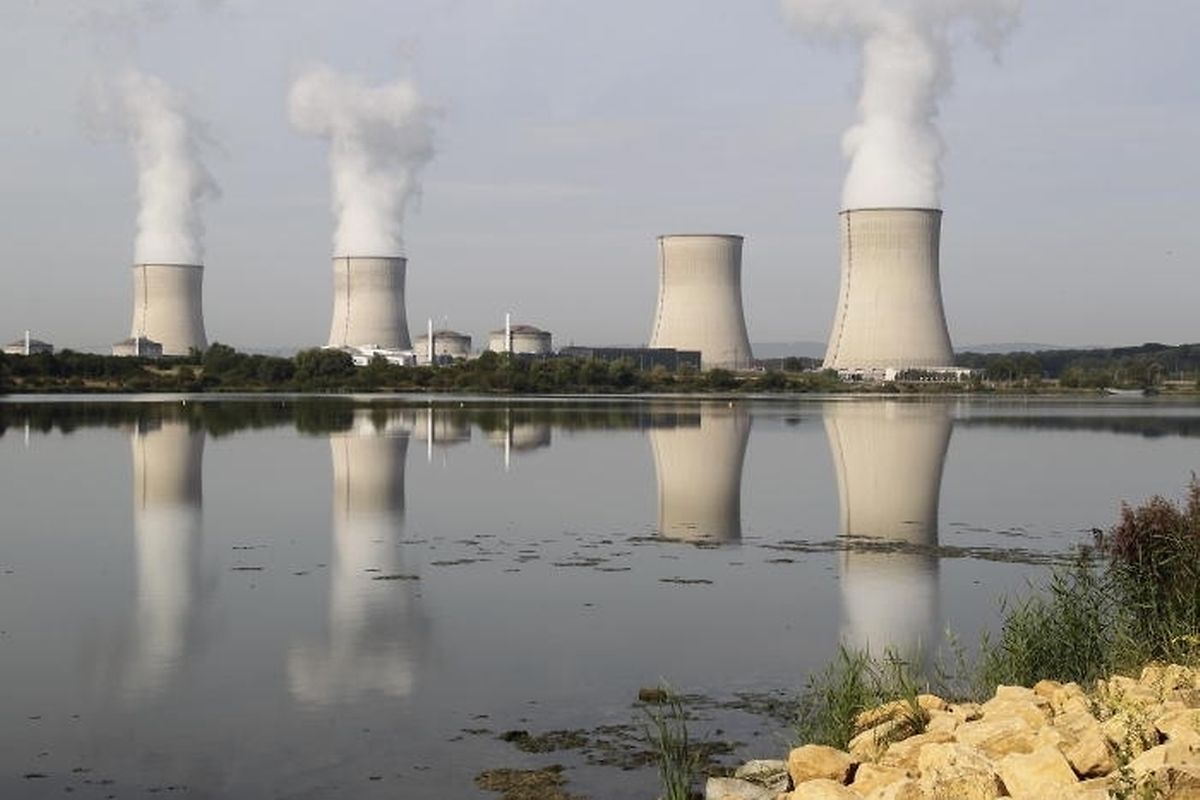On February 2, 2022, the European Commission (“Commission”) approved in principle the Complementary Delegated Act, a document that sets forth technical criteria for designating nuclear power and natural gas projects as sustainable.[1] Such designation will enable certain nuclear and gas projects to become part of the European Union’s (“EU”) taxonomy for sustainable activities — a classification system intended to avoid greenwashing and help investors direct financial support to bona fide sustainable projects.[2] Considering the aforementioned purposes of the taxonomy and risks associated with an increased production of nuclear and gas energy, it comes as no surprise that the Complementary Delegated Act has caused deep divisions among EU member states.[3] The controversial nature of the Commission’s decision does not automatically make it improvident, but it does raise a question of whether it would be appropriate to use nuclear power and natural gas to achieve the EU’s climate goals?
In December of 2019, the EU presented an ambitious program that would align the community’s economy with a growing need for climate action.[4] The program, dubbed European Green Deal (“Green Deal”), established a Union-wide commitment to reducing the greenhouse gas emissions by 55% by 2030 (when compared to the emissions rate in 1990), and reaching net zero emissions by 2050.[5] To help facilitate these objectives through responsible investing, the EU codified the taxonomy by adopting Regulation 2020/852 (“Taxonomy Regulation”).
For a project to be deemed sustainable under the Taxonomy Regulation, it must: 1) substantially contribute to at least one and not significantly harm any other environmental objectives set forth in the Taxonomy Regulation; 2) be carried out in compliance with the minimum safeguards set forth in recital 35 of the Taxonomy Regulation; and 3) comply with technical screening criteria established by the Commission in accordance with several provisions in the Taxonomy Regulation.[6] Using the mandate in articles 10(3) and 11(3) of the Taxonomy Regulation, the Commission set technical screening criteria for two environmental objectives, climate change mitigation and adaptation, in the Delegated Regulation 2021/2139 and in the document that amends it — the Complementary Delegated Act.[7]
Sections 4.26, 4.27, and 4.28 of the Annex I to the Complementary Delegated Act (“Annex”) provide a detailed technical screening criteria for energy obtained through nuclear fission.[8] To qualify for a green label under the Taxonomy Regulation, the nuclear power plant must limit the greenhouse gas emissions in the generation of electricity below 100g per kilowatt-hour.[9] Furthermore, the project must satisfy a number of requirements related to the disposal of radioactive waste and decommission of the plant. For example, all three sections require member states to have in place appropriate waste management and decommissioning funds; final disposal facilities for all very low-, low-, and intermediate-level radioactive waste; and a documented plan for operation of a disposal facility for high-level radioactive waste by 2050.[10]
While nuclear power reactors do not produce greenhouse gas emissions during operation, the classification of nuclear energy as “green,” even under strict conditions, is problematic.[11] The uranium fueled nuclear reactors produce a highly radioactive waste, which can take thousands of years to disintegrate into harmless materials.[12] The storage and disposal of high-level radioactive waste has not been uniform, and what is even more concerning, the global community is yet to come up with a plan for an effective long-term resolution of the issue.[13] In 2014, the EU announced a plan for construction of three geological underground repositories in Finland, France, and Sweden.[14] Some believe that such repositories, situated between 1,300 and 2,600 feet underground, could become a permanent storage site for highly radioactive fuel.[15] Although geological underground repositories are promising, their construction carries a high price tag.[16] Furthermore, considering how long high-level radioactive waste may remain in the environment, it is possible that a generation of humans, far distant in the future, could inadvertently reach a deep underground repository and the repository’s still highly radioactive content.
Unlike the concerns questioning the Commission’s foresight in bringing nuclear power within the ambit of the Taxonomy Regulation, the inclusion of natural gas, under strict conditions and for a limited time, seems warranted. Technical screening criteria for natural gas, set forth in sections 4.29, 4.30, and 4.31 of the Annex, reflects two main purposes of article 10(2) of the Taxonomy Regulation: 1) phase out of coal plants, and 2) use of non-renewable energy sources as a temporary alternative until technology for renewable sources is developed to the extent that it may satisfy the EU’s energy needs.[17] For example, each of the three sections require that future gas facilities — those with construction permits issued by December 31, 2030 — must replace existing facilities powered on coal or other solid fossil fuel; are necessary to meet certain energy capacity that cannot be generated from renewable energy sources; and are equipped to make a switch to full use of renewable/low-carbon gaseous fuels by December 31, 2035.[18] Furthermore, the relevant provisions address the issue of methane leaks, which may occur in the production and transport of gas, by requiring institution of programs and equipment necessary to detect and eliminate the leaks.[19]
Whether the Complementary Delegated Act will become the law of the EU will remain uncertain for another four months. Within that timeframe, either the European Council, through the vote of twenty member states representing 65% of the EU’s population, or a majority of members of the European Parliament, may block the proposed law.[20] Although countries like Austria, Denmark, Netherlands, and Sweden have expressed opposition to the classification, the proposed law is expected to pass in the Council with strong support from Germany and France — the two most influential member states.[21] However the Council and European Parliament decide to approach the proposed law, the text of the Complementary Delegated Act is unacceptable to the extent it provides for green labelling of nuclear power. The concerns over safe storage of high-level radioactive waste are too grave for the EU to promote proliferation of nuclear power plants and the accompanying accumulation of hazardous waste.
[1] Eur. Comm’n, EU taxonomy: Commission presents Complementary Climate Delegated Act to accelerate decarbonization (Feb. 2, 2022), https://ec.europa.eu/info/publications/220202-sustainable-finance-taxonomy-complementary-climate-delegated-act_en.
[2] Eileen Gallagher et al., What you should know about the EU Taxonomy, GreenBiz (May 19, 2021), https://www.greenbiz.com/article/what-you-should-know-about-eu-taxonomy.
[3] FRANCE 24, Austria vows legal action as EU angers activists with ‘green’ label for nuclear energy (Feb. 2, 2022), https://www.france24.com/en/europe/20220202-austria-to-challenge-eu-s-proposed-nuclear-green-label-in-court.
[4] Eur. Comm’n, A European Green Deal, https://ec.europa.eu/info/strategy/priorities-2019-2024/european-green-deal_en (last visited Feb. 8, 2022).
[5] Id.
[6] European Parliament and Council Regulation 2020/852, art. 3, 2020 O.J. (L 198) 13.
[7] Commission Delegated Regulation 2021/2139, 2021 O.J. (L 442) 1.
[8] Eur. Comm’n, Annex to the Commission Delegated Regulation 1-15 (Feb. 2, 2022), https://ec.europa.eu/finance/docs/level-2-measures/taxonomy-regulation-delegated-act-2022-631-annex-1_en.pdf.
[9] Id. at 3, 8, 13.
[10] Id. at 1-2, 6-7, 11.
[11] World Nuclear Ass’n, How can nuclear combat climate change?, https://world-nuclear.org/nuclear-essentials/how-can-nuclear-combat-climate-change.aspx (last visited Feb. 8, 2022).
[12] U.S. Nuclear Reg. Comm’n, Backgrounder on Radioactive Waste, https://www.nrc.gov/reading-rm/doc-collections/fact-sheets/radwaste.html(last updated July 23, 2019).
[13] Silvia Weko, Radioactive waste disposal in four words: “We do not know,” Energy Transition (Oct. 30, 2018), https://energytransition.org/2018/10/radioactive-waste-disposal-in-four-words-we-do-not-know/.
[14] Sebastian Moffett, Three permanent disposal sites for radioactive waste in Europe by 2025, Eur. Comm’n (Jan. 24, 2014), https://ec.europa.eu/research-and-innovation/en/horizon-magazine/three-permanent-disposal-sites-radioactive-waste-europe-2025.
[15] Id.
[16] See James Conca, Finland Breaks Ground On World’s First Deep Geologic Nuclear Waste Repository, Forbes (May 31, 2021), https://www.forbes.com/sites/jamesconca/2021/05/31/finland-breaks-ground-on-its-deep-geologic-nuclear-waste-repository/?sh=217de6486103(Finland is currently constructing a deep underground repository in the vicinity of the Olkiluoto power plant. The total estimate cost of construction is $3.4 billion).
[17] European Parliament and Council Regulation 2020/852, supra note 6, art. 10(2); Eur. Comm’n, supra note 8, at 15-23.
[18] Eur. Comm’n, supra note 8, at 16, 18-19, 21-22.
[19] Id. at 17, 20, 22.
[20] Eur. Comm’n, supra note 1.
[21] Monika Pronczuk, Europe labels nuclear and natural gas as sustainable investments, N.Y. Times (Feb. 2, 2022),https://www.nytimes.com/2022/02/02/business/energy-environment/europe-green-taxonomy.html.


